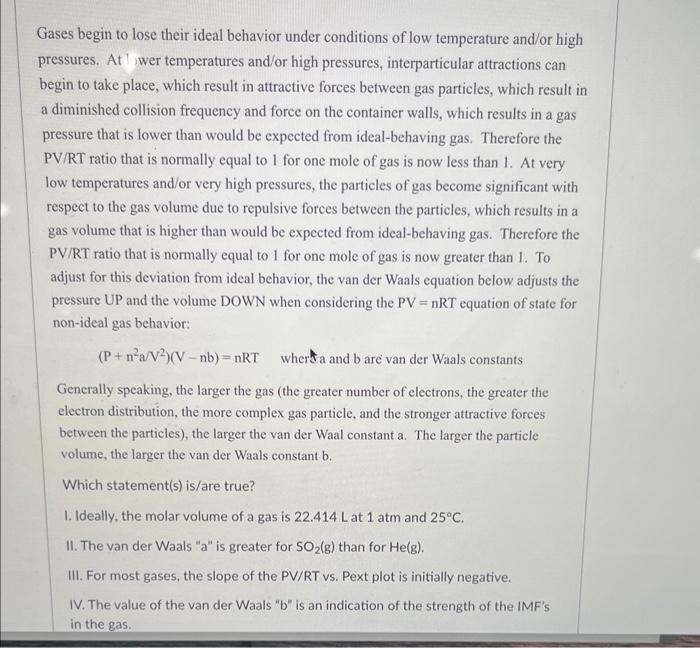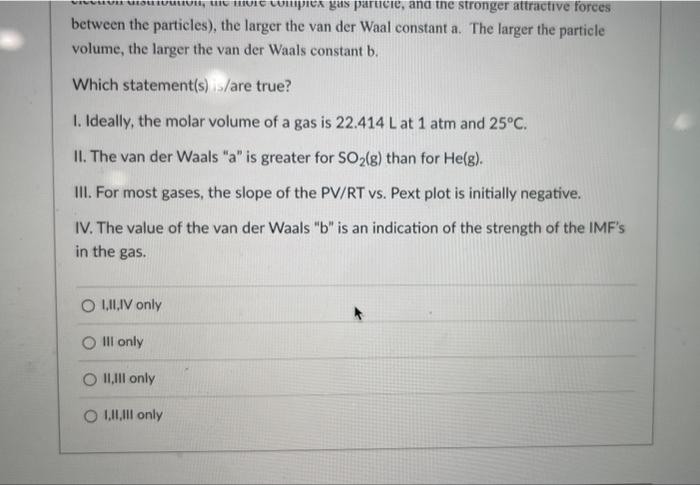Gases begin to lose their ideal behavior under conditions of low temperature and/or high pressures. At i wer temperatures and/or high pressures, interparticular attractions can begin to take place, which result in attractive forces between gas particles, which result in a diminished collision frequency and force on the container walls, which results in a gas pressure that is lower than would be expected from ideal-behaving gas. Therefore the PV/RT ratio that is normally equal to 1 for one mole of gas is now less than 1. At very low temperatures and/or very high pressures, the particles of gas become significant with respect to the gas volume due to repulsive forces between the particles, which results in a gas volume that is higher than would be expected from ideal-behaving gas. Therefore the PV/RT ratio that is normally equal to 1 for one mole of gas is now greater than 1 . To adjust for this deviation from ideal behavior, the van der Waals equation below adjusts the pressure UP and the volume DOWN when considering the PV=nRT equation of state for non-ideal gas behavior: (P+n2a/V2)(Vnb)=nRT whers a and b are van der Waals constants Generally speaking, the larger the gas (the greater number of electrons, the greater the electron distribution, the more complex gas particle, and the stronger attractive forces between the particles), the larger the van der Waal constant a. The larger the particle volume, the larger the van der Waals constant b. Which statement(s) is/are true? I. Ideally, the molar volume of a gas is 22.414L at 1atm and 25C. II. The van der Waals " a " is greater for SO2(g) than for He(g). III. For most gases, the slope of the PV/RT vs. Pext plot is initially negative. IV. The value of the van der Waals " b " is an indication of the strength of the IMF's in the gas. between the particles), the larger the van der Waal constant a. The larger the particle volume, the larger the van der Waals constant b. Which statement(s) is/are true? I. Ideally, the molar volume of a gas is 22.414L at 1 atm and 25C. II. The van der Waals " an is greater for SO2(g) than for He(g). III. For most gases, the slope of the PV/RT vs. Pext plot is initially negative. IV. The value of the van der Waals " b " is an indication of the strength of the IMF's in the gas. I,II,IV only III only II,III only I,II,III only








